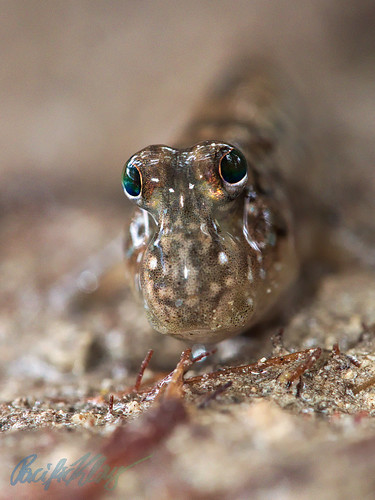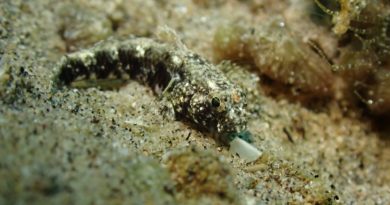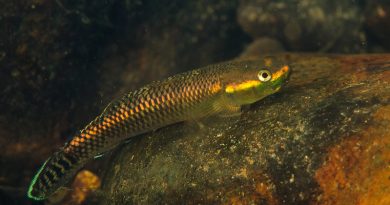Thoughts on Mudskipping
Since I started living in places in the sub-tropics (Okinawa) and tropics (Philippines), I have always enjoyed observing and photographing mudskippers. These are amphibious gobies, small fishes, which can live underwater but also venture out on land, at least a few meters. Their habitat are muddy mangrove flats.
Here is a collection of my mudskipper shots on Flickr (you can scroll through the album):

The species I see most on the Philippines is, I believe, Periophthalmus gracilis. It’s not easy to distinguish the different species of mudskippers without having a specimen under the microscope. These fish belong to the family of the gobies, and to the subfamily of the Oxudercinae (mudskippers).
An intriguing thought is to compare the present-day mudskippers with the first ever vertebrates which conquered the land in the Devonian period. Wikipedia has an excellent overview of the early evolution of tetrapods (land-vertebrates). This image shows some of the early land-dwellers:

It’s always useful to think in comparative evolutionary terms in biology. However, there are some crucial differences between the biology of present day mudskippers and what we believe we know about the biology of these early tetrapods. For one, the Devonian fishes which left the water found a planet without competition. Vascular plants and arthropods had already made it onto land, but no other vertebrates were lurking there to prey upon the new land dwellers. The situation is very different for mudskippers, which are preyed upon by birds. This probably limits them to the mangrove forests, full of hiding places between the mangrove roots. I don’t see mudskippers invading the land past the mangorves ever, unless all birds and predatory land mammals go extinct.
Another crucial difference between early tetrapods and mudsippers is their size. Some of these lobe-fined fishes which gave rise to the earliest amphibians were huge, up to several meters in length, and are up to this date some of the largest freshwater fishes in the history of the planet. And it seems they first evolved how to walk, under water, on the bottoms of the brackish or freshwater bodies they inhabited, and then took the step on land. Air respiration came somewhat late to this assembly of adaptations to land life; even today some fishes which live in stagnant waters can breathe air.
Due to their large size, these lobe-fined fishes evolved a gait which used four limbs to drag themselves forward in a cumbersome way, initially with the abdomen and tail dragging through the substrate. Mudskippers, in contrast, are small animals, and move by using their pectoral fins only (two limbs), and their tail. They can propel themselves over the water and mud in a proper “skipping” motion, like a flat stone thrown onto a pond with a flat trajectory by a playful child. No meter-long lobe-fined fish would have been able to pull that off.
So it seems that mudskippers are a good model for early tetrapods in only some respects… Walking fishes which never leave the ocean might be another good present-day model for what happened in the Paleozoic…. Like this walking stonefish:


